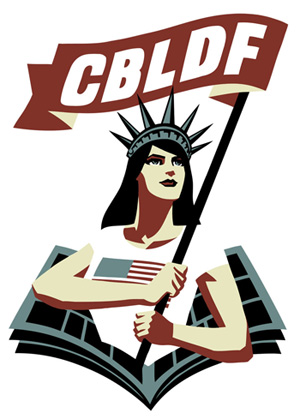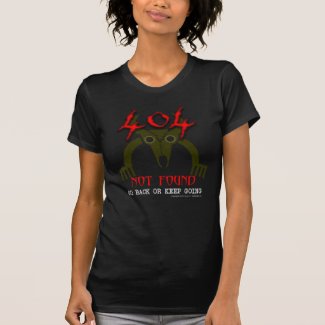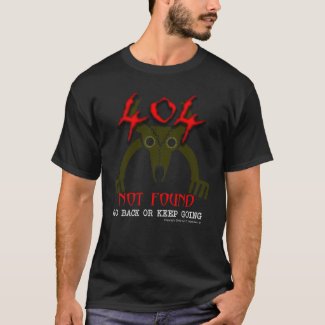 |
 |
Review by Mark Worthen |
||
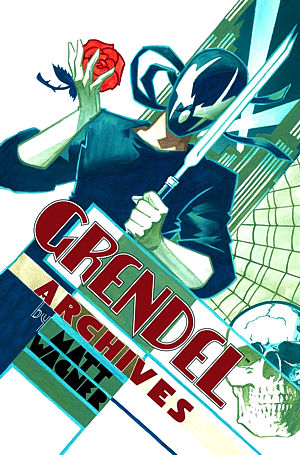
Written and Illustrated by Matt Wagner Dark Horse Books Graphic Novel - 104 pages ISBN: 1 59307729 7 |
||||
Recently I got turned on to Grendel.
No, I'm not talking about the beast from Beowulf who had Angelina Jolie for a mother, but the comic series written and pencilled by Matt Wagner. For those of you not in the know, Grendel is a recurring villain who occasionally battles Batman, but stays mostly in his own universe.
But Grendel isn't your average bad guy. He has motivation. He has needs, desires, wants, and yes, loves. He's a human bad guy, who you can't help but feel bad for and identify with. He's a killer and assassin, yes. A crime boss, certainly. But has a need to protect a child named Stacy Palumbo, even as he goes head-to-head with her father, one of his underworld rivals.
Grendel is what they sometimes call an anti-hero. A villain whose life and business you want to care about despite the fact that he leads a criminal organization running a number of enterprises.
He first appeared in Comico as Hunter Rose, a young man who was originally hurt by the death of his parents and was educated in matters sexual and otherwise, learning to play what he calls "the game." The game is how he looks at life: you win, you lose. He became an expert fencer and fighter and became skilled in other weapons as well, both Eastern and Western. He became a freelance assassin, quickly rising to head a criminal empire at night, writing crime novels by day. A master villain with a secret identity.
But Rose isn't the only Grendel. Wagner himself describes the series as a "centuries-spanning saga" with several other people taking on the role to square off against with various foes, both good and evil. One of these Grendels is the same Stacy that Hunter Rose swore to protect. Wagner has made allusions to previous Grendels before Rose as well, but this writer is not aware of any such stories.
Grendel first appeared in Comico's Primer, which brings me to my current business. In 2007, Wagner rereleased four of the original Grendel issues in graphic novel form. The purpose is to introduce the reader to the Hunter Rose character, as well as that of his nemesis, the law-enforcing wolfman Argent.
The first issue introduces Hunter Rose, novelist, master assassin and crime kingpin. Armed with his staff and dressed in a skin-tight black outfit with a face-concealing ninja-like mask, he can kill with little effort. The reader also meets Argent, the man-wolf who works with the police to try to capture the crime lord. The story itself is simplistic and short, but it accomplishes what it sets out to do: present the characters, their needs and their objectives.
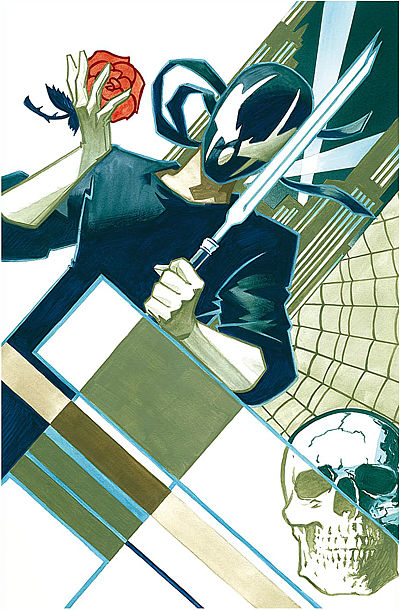
Matt Wagner's cover art
The second tells Hunter Rose's life story, recounting the death of his parents as well as that of an older lover. "What matters is the competition – the Game." What he doesn't learn from others, he teaches himself, rarely taking anything seriously but his own plans.
The third relates Argent's story. Cursed by a now-dead Algonquin god for engaging in physical love with his sacrifice, he walks the streets, semi-immortal and trapped in wolf form, tracking down thieves and murderers.
The fourth and fifth tell the reader how Hunter Rose had his heart stolen by a little girl, the daughter of one of his criminal enemies, and how she loses her father and becomes embroiled in the Grendel legend.
All in all, the stories don't reflect the best writing, and the dialogue is kitschy. Whether that is on purpose or the result of Wagner's then inexperience, I could not tell, though in his introduction, he credits all the flaws in the four tales to newness at his craft.
Wagner and others who originally went to Dark Horse wanted to read comics that "Spoke to him on a gut level and not something that has to answer to years and years of corporate 'continuity.' I wanted to make my own myths and not sponge off the diluted efforts of those spawned in past generations." They felt that many of today’s comics had become tainted by corporate America, and the industry needed an infusion of fresh blood.
Grendel was part of that blood, as was Mike Mignola's Hellboy and many other characters.
While the art in the Grendel series eventually became quite good, at Comico – as reflected in the graphic novel -- is essentially black and white line drawing owing a little bit to the creators of Astro Boy and a little bit to early John Romita, Jr. (he's everywhere, isn't he?) Every few scenes, you'll see a reverse shadow on a white background, a la Frank Miller. Generally speaking, however the art is like the storylines: simplistic and aiming low.
However, the style grows on the reader very quickly, and despite the art and the writing, the freshness of the characters keeps the reader going through the story and to the end. I read it in one sitting, which I rarely do. And while my assessment of the art and story might be to compare it to a child's first steps, as Wagner himself does in the introduction, it's good to go back and see how the myth that is Grendel began.
One caveat for the reader – that last story is not resolved, because the original ended mid-arc due to financial difficulties at Comico.
I give it two fanboys, because the art and storytelling are far too basic for my tastes, despite their freshness and then-novelty. But what Grendel becomes, both in terms of legend and story is worth more. And definitely worth reading. If you're a Grendel collector or fan, you'll want to add it to your collection for its addition to the mythos.
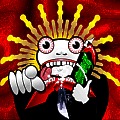

This review copyright 2007 E.C.McMullen Jr.
| HTML: Live By The Code | |
| FEO AMANTE'S HORROR THRILLER Created by: E.C.MULLEN JR. |
| COME FOLLOW ME @ Amazon |
| ECMJr |
| Feo Blog |
| IMDb |
| Stage32 |
| YouTube |
| Zazzle Shop |
